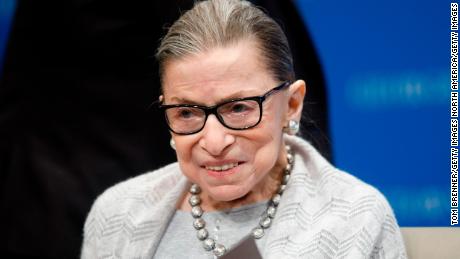In spite of ascending to the presidency after
losing the popular vote, recording historically
low presidential approval ratings, and becoming just the third president to be impeached, only Jimmy Carter has
appointed more federal judges at a similar point in their presidencies as Trump. The Conservative transformation of the federal courts in recent years has been a point of pride for McConnell and consternation for many Democrats.
The Republicans’ move to fill Ginsburg’s seat has infuriated Democrats who have not forgotten McConnell’s refusal to hold a vote over President Barack Obama’s nomination of Merrick Garland to the High Court in February of 2016. Back then, McConnel
said that the American people should “have a voice in this momentous decision.” As noted, the people are currently in the midst of speaking by voting early in several states and many more will be joining them in the next few weeks by casting their votes in advance of the November 3 election.
The Garland appointment went nowhere and the seat remained vacant until Neil Gorsuch was
nominated by President Trump and confirmed by the Senate in early 2017. Trump was able to fill a second seat with the controversial
appointment of Brett Kavanagh in October of 2018. Just one month later, Democrats had a strong midterm
showing, gaining control of the House of Representatives as 40 seats switched party control.
While this strategy may land the GOP an additional conservative seat on the Court, it may lead to some additional far-reaching consequences that may ultimately not serve their long-term purposes very well. It could also secure a Biden victory and cost Republicans the Senate. If that were to happen, we could expect Democrats to retaliate and use their newfound power aggressively to regain what they believe to be lost ground on the federal courts. It could also bring about major changes to the legislative process.
If 2020 results in another Democratic tidal wave, it would yield Democratic control of the presidency, House, and Senate. If indeed this were to happen, we can expect that Democrats will
play hardball of their own by pursuing an agenda that could result in eliminating the filibuster and passing legislation related to voting reform, immigration, health care, and tax reform. And in what would have been unthinkable several months ago, Democrats could very well pass legislation to restructure the federal courts.
Sen. Brian Schatz (D-HI) suggested as much
tweeting: “It is going to be very hard after the procedural violence that Mitch McConnell has inflicted on the Senate and the country for anyone to justify us playing it soft next year just to satisfy pundits. We must use the power that voters give us to deliver the change we are promising.”
Likewise, Sen. Ed Markey (D-MA)
tweeted that if McConnell seeks to fill the seat then “when Democrats control the Senate in the next Congress, we must abolish the filibuster and expand the Supreme Court.”
Throughout the primary season, Democrats
discussed major changes of this sort — from abolishing the Electoral College to increasing the size of the Court. The Republicans’ move to seize another Supreme Court seat in the midst of an election would provide Democrats with the motivation and excuse to make those changes should they gain power.
Prior to Ginsburg’s death, polling showed that voters preferred Biden
choose the next Supreme Court Justice. Just as the power to fill vacancies on the Court was a motivating factor for Republicans in 2016, it is likely the same issue could provide a significant boost to Democrats this year. This is especially likely if Republicans continue to move forward with a Trump nomination.
Traditionally, the Court has been seen as a counter-majoritarian check, whereas the electoral process is geared to majoritarian rule. However, the power of the Senate — and the control it gives to less populated states — has skewed power into the hands of a minority of the population. Some on the left have argued that the Senate’s emphasis on federalism has come at the
expense of majoritarian rule.
In addition to the power of the Senate in judicial nominations, the Electoral College has also ceded greater influence to less-populated states as all states
receive two electoral votes on the basis of their statehood, regardless of their population. Theoretically this provides greater voting power to less populated states compared to more populated states. For instance, in 2016, an electoral vote in Wyoming represented just under 200,000 citizens, while an electoral vote in California represented over 700,000 citizens.
This is underscored by the fact that we have had two presidents win the office in spite of losing a plurality of the vote in the last five elections. Thus, only half of the remaining justices on the High Court were appointed by presidents who first attained office by winning the popular vote.
In short, our electoral system has enabled a minority of the population to rule, rather than the majority — or even a plurality. We would not be surprised, then, if McConnell’s decision to try and fill the seat ultimately backfires on Republicans by ushering in a unified Democratic government. If that were to happen, Democrats may well choose to wield their power to regain control of the Courts — especially if they believe that two Supreme Court seats were stolen during Trump’s only term.
Buckle up America because 2020 — somehow — is about to get even worse.
![]()




